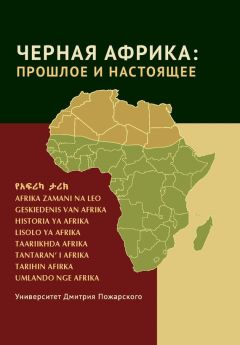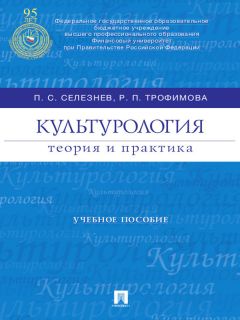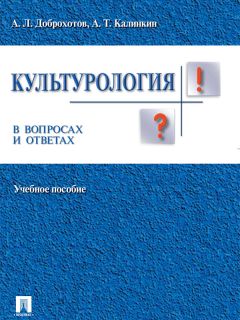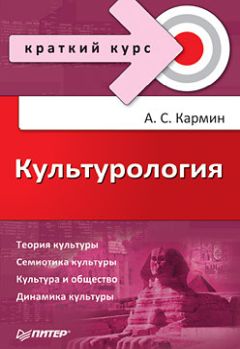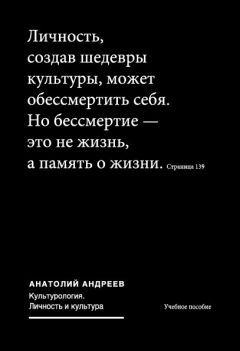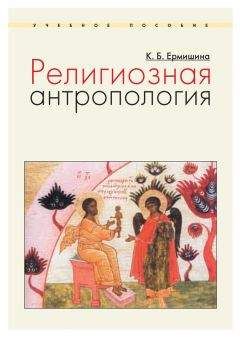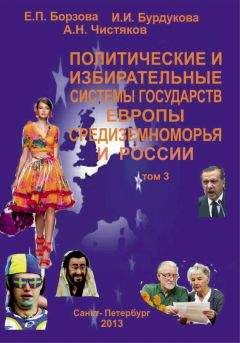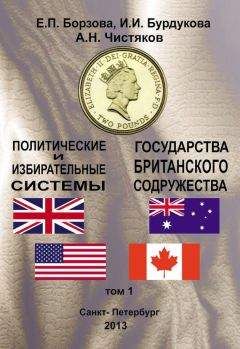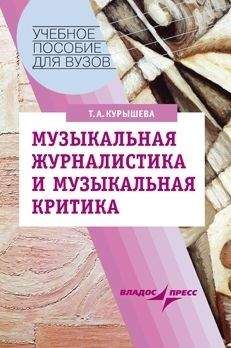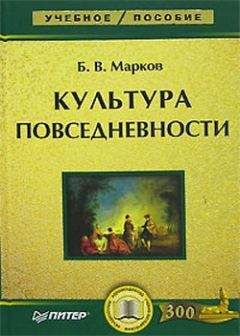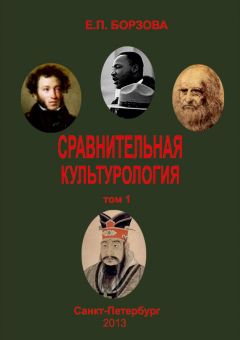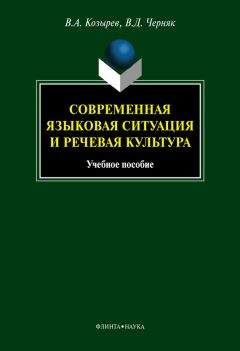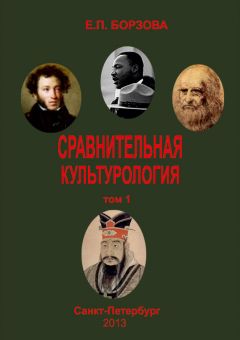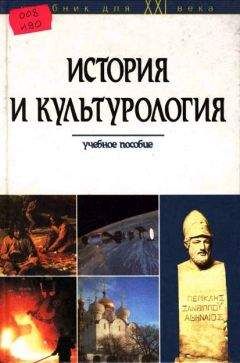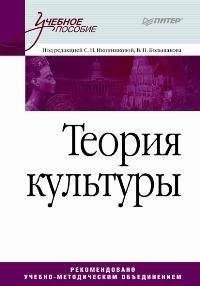Алексей Минченков - Glimpses of Britain. Учебное пособие
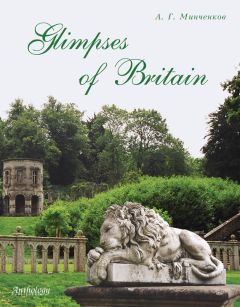
Все авторские права соблюдены. Напишите нам, если Вы не согласны.
Описание книги "Glimpses of Britain. Учебное пособие"
Описание и краткое содержание "Glimpses of Britain. Учебное пособие" читать бесплатно онлайн.
Учебное пособие посвящено истории и современной жизни Великобритании. В хронологическом порядке описаны основные исторические события и личности, оказавшие влияние на формирование британского самосознания и культуры. Отдельное внимание уделено истории архитектурных стилей. Подробно рассматривается современное состояние монархии, системы государственного и местного управления, парламентская и судебная системы, а также вопросы, связанные с национальным наследием и государственной символикой. Пособие включает в себя переводческий глоссарий с фонетической транскрипцией и хрестоматию, содержащую газетно-журнальные тексты страноведческого характера и выходящую отдельной книгой. Издание богато иллюстрировано авторскими фотографиями.
Пособие предназначено для студентов и школьников, занимающихся страноведением Великобритании, преподавателей, переводчиков и всех, кто интересуется историей, культурой и современной жизнью этой страны.
The White Tower in the Tower of London
The same revolution was applied to the Anglo-Saxon church. In Normandy William controlled all the appointments of bishops and abbots, filling them with his own friends and relations. Bishops and abbots from before 1066 either died or were deposed. They were replaced by Normans, and had to render the king rent in the form of armed knights. Together the tenants-in-chief, bishops and abbots made up the new ruling class, for the higher clergy, being educated, were essential for the running of the government. In these changes William was aided by a new archbishop of Canterbury, Lanfranc. Both believed that priests should be celibate. More significant for the future was the creation of special courts to deal with church cases only.
All the lords had the right to attend the king’s council and it was his duty to ask their advice. William held council meetings nearly every day, wherever he happened to be. Three times a year he held a ceremonial council for Christian feasts and wore his crown: in Winchester for Easter, in London for Whitsun and in Gloucester for Christmas. Then every lord had to attend.
Winchester castle was still the seat of Government. Here William set up his government office, which controlled the collection of taxes and kept account of all expenses. From this office men were sent out in 1086 to make a detailed record of all the wealth of England, for William, fearing invasion from Denmark, wanted to extract the maximum in taxation. The result was the Domesday Book, which gives us a complete description of the country. The book occupies 400 double-sided pages and paints a picture of a country where virtually the entire population was engaged in agriculture with little or no industry or commerce, and few towns.
William’s reign saw a wave of new building in the beautiful style called Norman or Romanesque. The Romanesque style was fully developed by about 1100, becoming the accepted style for church buildings throughout Europe, with marked regional variations. In England, soon after the Norman Conquest work began on the Cathedrals of Canterbury, Lincoln and Winchester [12], and the churches of St. Albans, Ely and Worcester. However, only parts of these buildings have survived: they were all largely rebuilt in the 12th – 14th centuries. The finest Norman building to survive in England is Durham Cathedral, begun in 1093 and completed in 1133. [7] The style made use of massively thick walls, huge columns and lofty vaults. There were small windows and doors. The round arch became established as the basis of the church interior. [9] Some of the churches were indeed very ornate, with decorated pillars and carved doorways.
As for domestic architecture, there were manor houses and castles. In early Norman England the hall, together with a few out-buildings about a courtyard constituted the entire accommodation of the manor house. The first castles had a mound or motte [6] (in modern England remains of more than 3,000 Norman mounds can be found) with a single defensive four-storey tower and a bailey, that is a fortified outer wall initially made of wood and later of stone. The most famous of the early Norman towers is the White Tower of London begun in 1078. Slightly later came circular shell-keeps like that at Windsor Castle. In the mid-12th century this style changed under the influence of the Crusades. A fine example of the new style is Conisborough Castle built about 1180 (used as a setting for the film based on Ivanhoe by W.Scott). The tower or the keep was retained as a lordly residence. [14] This was surrounded with a stone curtain wall with solid half-round towers along its length. Rings of concentric defenses were to be the future of the castle form. [13] By the second half of the 12th century the castle had already become primarily a domestic residence, but with built-in precautions for protection against social unrest.
For the invaders the conquest of England was a remarkable achievement, and enduring at that. For the native population it was a cruel and humiliating defeat which swept their civilization away. The new aristocracy saw its first loyalty not to the land they had conquered but to Normandy. For four centuries to come English kings were also to be continental rulers, and the wealth of England was expended in wars aimed at acquiring, defending and sustaining a mainland empire.
The state which William I created called for strong kings. Fortunately he was succeeded by two of his sons who were just such men, but disaster was to strike later when his grandson seized the throne. The crown passed first to the king’s second son, William Rufus, next to his fourth son Henry I, and finally to his grandson, Stephen. Stephen was a weak king, so the result was anarchy. Some of the barons went over to Matilda, the daughter of Henry I, others were loyal to Stephen. Worse, the barons began to fight private wars with each other.
Medieval England
Before his death in 1154 Stephen adopted Henry, Matilda’s son, as his heir. Henry’s father was Geoffrey Plantagenet, Count of Anjou, Matilda’s second husband, and his wife was Eleanor from Aquitaine. So, when he came to the thrown as Henry II (1154–1189) he held an enormous empire including England, Normandy, Brittany, Anjou and Aquitaine, and called the Angevin Empire. Henry II was the first of 13 Plantagenet kings who were to rule England for 300 years. He was universally respected as a just and wise king. He was the first literate king after the Conquest, being able both to read and write. Henry set out to restore the power of the crown and in so doing laid the foundations of a system of government that was to last for centuries. These developments came about partly because the king, having always to be on the move, needed to leave officers he could trust behind him. So successful was he in the case of England that he was able to absent himself for several years at a time, and yet order and justice were maintained. Castles illegally constructed by the barons were demolished and replaced by manor-houses. A knight’s feudal service of 40 days was of little use to Henry, who needed regular soldiers to guard his French possessions. He encouraged his lords to pay a special tax instead of sending him their knights. This allowed him to hire professional soldiers, while the knights remained at home and improved their manors.
Henry II is best remembered for his reform of the courts and the system of law. He sent out his own judges to make regular tours of the country, and any freeman could take a case to them if he didn’t trust the local courts. Most important was Henry’s jury system. In Henry’s times the jurors were witnesses themselves, and no man could be tried unless a jury of 12 men swore that there was a true case against him. This was real progress. In England now there are two kinds of law: statute law, that is Acts made by Parliament, and common law. Common law was first collected together by Henry II. It reflects the changing customs of the land which have been expressed in court judgments through the ages. Henry believed so strongly in the rule of law that he kept no army in England, but laid down the exact weapons and armour that every free man should hold ready for the defence of his country.
What proved a real problem was the king’s relationship with the church and the man who was to become first his chancellor and then his Archbishop of Canterbury, Thomas Becket. Many practices of the church courts were an insult to Henry’s rule of law, for they often let even murderers go unpunished. Besides, by the close of the 11th century, the church was undergoing a revolution, asserting the dignity of the priestly office and the power of the popes as direct successors of Christ through St. Peter. The Anglo-Saxon and the Norman church had been at the service of the state. The kings were sacred beings and appointed both bishops and abbots. The king presented them on appointment with a staff and a ring, symbols of their office. The staff, called a crozier, symbolized their role as the shepherd of their flock. They then did homage to the king and received their lands. The struggle to separate the church from the control of the state was to become focused on the one act of the king giving the office holder his staff and ring. In the reign of Henry I a compromise was reached: the king no longer gave the cleric his ring and staff but retained the right to receive his homage. But neither side was happy.
The story of the conflict between Henry II and Thomas Becket, which probably has not only a political but an important human dimension, being also a conflict between personal loyalty and personal convictions, is so dramatic that it served as a source of inspiration for two famous writers, one of whom, the French dramatist Jean Anouilh wrote a play called Becket (1959), and the other, T.S.Eliot, made a verse play Murder in the Cathedral (1935).
The struggle between the church and the state reached a crisis in the reign of Henry II. When the king came to the throne he appointed Thomas Becket to the major administrative post of chancellor. Becket and the king became great friends. In Becket the king saw a means of tidying up relations between church and state. He believed that with his friend as Archbishop of Canterbury the situation could return to how it had been just after the Conquest. In 1161 the opportunity came with the death of the archbishop. On 2 June 1162 Becket was ordained priest and on the following day appointed Archbishop of Canterbury. After that he immediately resigned all his secular offices and changed his style of life to self-denial and humility. Henry, however, failed to recognize that times had changed and his old friend had been trained in the new canon law in which the clergy were exempt from lay interference. Henry decided that criminal clerks must in future be tried by lay courts, for in a church court the worst sentence was to defrock the clerk. Public opinion supported the king and most bishops agreed, but Thomas refused and fled abroad. For 6 years there followed endless attempts to bring about a reconciliation. In July 1170 Becket returned to England. His first act was to excommunicate all the bishops who had taken part in the coronation of Henry’s son as successor in Becket’s absence. The king was seized with fury, crying in an unguarded moment ‘Who will rid me of this low-born priest?’ In all too eager response four knights slipped out of the room, set sail for Kent and on 29 December murdered the archbishop in his own cathedral.
Becket’s tomb in the crypt of Canterbury Cathedral [21] became a shrine at which miracles occurred and soon after, in 1173, the pope canonized him. Canterbury swiftly became the most popular centre of pilgrimage in medieval England. The king himself did penance walking barefoot through the streets of Canterbury and after that gave himself over to being flogged by his bishops and monks. Yet, Henry’s inheritance was splendid: good government in terms of peace, law and order on a scale unknown to any other country in Western Europe at the time.
Nothing is more striking than the stability of England at the time of Henry’s death. So strong was the government that it could withstand the fact that the next king, Richard I, who ruled for a decade (1189–1199), only visited the country twice, once for three months, and a second time only for two. He was dubbed Coeur de Lion or Lion-Hearted, in tribute to his dare-devil bravery; England was looked upon as little more than a source for money to pay for the crusade on which he embarked. When Richard was killed the Angevin Empire passed to John.
This time it was a far from glorious legacy: war with an increasingly powerful French king, financial crisis in England caused by the wars, as well as the late king’s crusade and ransom money. Whatever Richard’s shortcomings, he had been respected and evoked loyalty. No one quite trusted John (1199–1216), who had been nicknamed Lackland by his father.
Normandy, Anjou and Brittany soon fell into the hands of Philip Augustus, the French king. All that was now left of the Angevin Empire was Aquitaine, commercially held fast to England by the wine trade. These disasters were followed by a seven-year struggle with the pope over the choice of a new Archbishop of Canterbury. The monks went ahead and elected the archbishop with no reference to the king. John had his own candidate; the pope, however, declared both of the elections void and had the monks elect Stephen Langton. John refused to recognize the new archbishop; the pope in reply excommunicated the king and laid the country under an interdict. For seven years the churches remained closed and finally John gave in.
In 1214 the war against France was reopened, but the campaign was a total failure. The king returned to find an empty treasury and enraged barons. At Runnymede, on the Thames near Windsor, the lords forced John on 17 June 1215 to sign Magna Carta. The Great Charter contained over 60 clauses putting into writing an agreed body of laws covering every aspect of government and of the relationship of the king to his subjects. This was the beginning of the idea that people ought to be consulted and in the long term it was to lead to Parliament. The two most important matters covered by the Charter were that no tax should be made without the approval of the council, and no freeman should be arrested or imprisoned except by the law of the land. Other clauses guaranteed the freedom of the church from royal interference and the privileges of the newly emerging boroughs, above all the city of London.
John signed unwillingly. But the Great Charter itself gave the lords the right to use force against the king if he broke his word. Quite soon John supported by the pope declared the charter unlawful, so fighting broke out again, during which John suddenly died. His son Henry III (1216–1272) was only nine and under the wise influence of Langton the Charter was accepted, and all was peaceful until Henry became old enough to rule. His main aim was to ensure that he was absolute monarch. His high aspirations were summed up in rebuilding Westminster Abbey in the French Gothic Style. The sanctity of kings was emphasized in the royal saint, Edward the Confessor, who was given a splendid new shrine behind the high altar around which there was to be a royal burial place. The regalia were kept in the new church, which was also the setting for the ritual of coronation. It was even believed that the king could heal by touch those suffering from scrofula. For the first 30 years of his reign Henry was able to rule more or less as he liked. But gradually government was becoming increasingly complicated. A century before, the chancery and the exchequer had been merely parts of the royal household dealing with administrative and financial affairs. By the middle of the 13th century they had moved out and become separate departments, the barons were suspicious and wanted to have a say in the choice of the chancellor and the treasurer. Their means of achieving such control was through meetings of the Great Council which included all the lay and clerical leaders of the nation, but whose composition wasn’t fixed. The king however made use of his own Royal Council consisting of men of his choice. The barons objected. Henry would have survived these challenges to his rule if his choices had been wiser and his government more effective. But it wasn’t the case. So, for almost ten years, between 1257 and 1265, the king and barons were locked in a succession of crises in a struggle for control. The eventual result was civil war. At the battle of Lewes the king was defeated and, a year later, in 1265, Simon de Montfort, the leader of the opposition, was not only defeated but killed. The king had seemingly won, but this was not altogether true, for during these years the Great Council met more and more often. Added to it now were knights to represent the shires and burgesses to represent the towns. Never before had the meetings of the Council included so many different classes. The meetings were called parliaments from the French word ‘parler’, ‘to speak’, because they were conferences between the king and his subjects. Gradually the idea that the king should consult representatives of the kingdom on certain subjects like taxation became something to be expected. No one in 1272, when Henry III died, could have foreseen that these conferences would lead to modern parliament.
Подписывайтесь на наши страницы в социальных сетях.
Будьте в курсе последних книжных новинок, комментируйте, обсуждайте. Мы ждём Вас!
Похожие книги на "Glimpses of Britain. Учебное пособие"
Книги похожие на "Glimpses of Britain. Учебное пособие" читать онлайн или скачать бесплатно полные версии.
Мы рекомендуем Вам зарегистрироваться либо войти на сайт под своим именем.
Отзывы о "Алексей Минченков - Glimpses of Britain. Учебное пособие"
Отзывы читателей о книге "Glimpses of Britain. Учебное пособие", комментарии и мнения людей о произведении.






